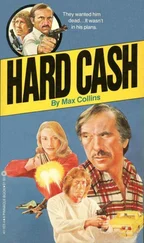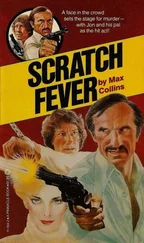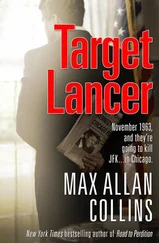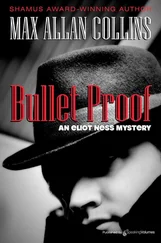“I can see that,” Crane said, keeping a calm tone. Trying to give her room to say what she wanted to say. “The story of Agent Orange would have a place in your book, but the book couldn’t depend on that... it’s a story that’s been told elsewhere.”
“Exactly! And the interviews, the statistics, laying out the pattern of illnesses here in Greenwood and other nearby small towns, whose populations largely consist of families supported by one or more Kemco employees, it’s impressive, it’s shocking even... but it’s circumstantial. And, damnit, I’m no scientist. I can’t say I’ve really proven anything .”
“Can’t you get inside the plant, to check on safety conditions and so forth?”
“Are you kidding? How, by asking Patrick, my ex-husband, for a tour? And what would I see on a company-directed tour? I’d get the standard P.R. shuffle, right? And suppose I got in on my own somehow, to really snoop around? What would I be looking for? How would I know how to judge the safety conditions in a chemical processing plant?”
“What you’re saying is your book lacks something.”
“It sure as hell does. I need a smoking gun, Crane.”
“A smoking gun.”
“Right! Something really tangible. Don’t you get it? Don’t you understand, Crane? Kemco is fucking malignant , festering, a bed of corruption and negligence...”
“I see,” Crane said, hoping her journalistic style was somewhat more subdued.
“I need to be able to show Kemco being criminally negligent . Not just a big well-meaning corporation that may have had some problems with plant safety.”
“It doesn’t sound to me like you have anything remotely like that.”
“Oh but I do. In one of my interviews, with a company employee who was a friend of one of the ‘suicide’ victims, I learned that Kemco’s playing dump-and-run.”
“You’ve lost me.”
“Kemco has to account to the federal government for the disposal of any potentially hazardous waste material; like this stuff PCB, which is used to insulate electrical transformers. Kemco makes that, and the waste from it can be dumped at only three federally approved sites. For years these companies dumped their shit wherever the hell they wanted... sewers, creeks, rivers. You know what they used to think? ‘Dilution is the solution to pollution.’ Only it didn’t work out that way; there are plenty of toxic substances that don’t harmlessly break down in water. So they started burying the stuff — Kemco, and Dow and Monsanto and DuPont and Hooker and all the others. Usually in 55-gallon steel drums, which eventually corroded and started to leak out into the ground, contaminating farmland and water supplies and people.”
She was starting to rant; he tried to stop her: “Boone, I’ve heard of Love Canal. I know about things like that. But those are dump sites from twenty years ago. Things are more regulated than that now.”
“In theory. You know, I’m glad you’ve heard of Love Canal, because so has Kemco, only they don’t give a fuck. They are still hiring lowlife truckers to come dump this stuff God knows where, and with Christ knows what results on the environment and the people living nearby.”
“What does any of this have to do with Mary Beth?”
“She was working this summer in Kemco’s secretarial pool. A lot of the execs used her — she was good, and well liked; the daughter of a late, trusted employee. She heard some things. Saw some things.”
“Such as?”
“One major thing, specifically: one evening, when she was working alone, staying late, trying to catch up on some work, she saw one of the executives give an envelope to a rough-looking guy who might’ve been a trucker. The trucker took some cash out of the envelope and counted it.”
“That’s it? That’s what she saw? That’s thin, Boone. That’s goddamn thin.”
“I don’t think that’s all she found out.”
“Don’t you know ?”
“I was out of town for about three days, doing some research on the Agent Orange aspect of the book. When I got back, there were half a dozen messages for me to call her. I called. She was dead.”
“She was snooping around for you, then. For your book.”
“Crane, blaming me won’t do any good.”
“I’m not blaming you. Do you know the name of the exec she saw handing the money over?”
“Yes. It was Patrick.”
From the highway, glancing over to the left, yellow-orange light stained the horizon, just above the trees. It was as if the sun were coming up at midnight. They turned off onto a blacktop and followed the signs that led them from one blacktop onto another, and another, and the stain against the sky became a city. A city of lights and smoke.
As the city’s skyline emerged, the only skyscrapers were smokestacks, a dozen of them, emitting ever-expanding grayish white clouds that made seductive patterns as they rose.
Crane had expected the Kemco plant to be big, and it was; but it was more spread out, and closer to the ground, than he’d thought. There was an eerie, almost underwater look to it all, with the shifting smoke backdrop, the green-yellow-aqua outdoor lights strung about like bulbs at a particularly drab pool party. The taller, larger buildings resembled greenhouses, their walls sheets of mottled aqua-colored plastic, cross-hatched with metal, rising up amidst massive inter-twines of steel pipe. There was a massive electrical substation nearby. Numerous one-story buildings. Countless chemical tanks. Off at the sides, huge, squat, silo-like structures huddled like metal toadstools. Just inside a full-to-capacity parking lot, an American flag flapped against a grayish white breeze. The plant was going full throttle, but Crane had yet to see a human being.
Other than Boone, of course. She was driving. They were in her yellow Datsun. They passed a green tin building half a block long: the loading dock for Kemco trucks.
“That’s where the trucks come out,” Boone said, pointing as they approached a graveled area to the left of the loading dock; a small brick building served as a clearing booth for departing trucks, of which there were none at the moment.
“Where do we watch from?” Crane asked.
“You’ll see.”
Opposite the Kemco plant, on the other side of the road they were driving down, was a flat open field; in the darkness it was hard to see how far the field extended. It resembled farmland. They’d passed several farms, within half a mile of the Kemco facility, on this same road; but this field wasn’t being used for farming, or anything else, though perhaps it had once been a dump site for wastes — the proverbial “back forty” used by many chemical plants — long since filled up and smoothed over.
There was room alongside the road to park, which they did, a quarter of a mile down from the truck loading area.
“Are we going to be okay, here?” Crane asked.
“Sure. Nobody’s going to think a thing about us.”
“Yeah, right. What’s conspicuous about sitting out here in the open like this?”
“It’s dark. Nobody’ll see us.”
“A car going by will see us. A truck.”
“Crane, one of the few nice things about the Kemco plant is it’s out in the boonies... and you know what people in parked cars out in the boonies do, don’t you?”
“I think I can guess, but I don’t know what it has to do with us.”
“If a car or a truck goes by, we pretend to be making out. Think you can handle that?”
“I suppose. But be gentle.”
Boone frowned at that, but it wasn’t a very convincing frown.
They sat and watched for an hour, saying very little, waiting for something to happen. Nothing did. The plant down the way, from this distance, looked like a cheap miniature in a ’50s science-fiction movie. The longer he stared at it, the less real it seemed; yet at the same time, it struck him as being something breathing, something alive. It was the constant billowing smoke that did it, he figured.
Читать дальше












